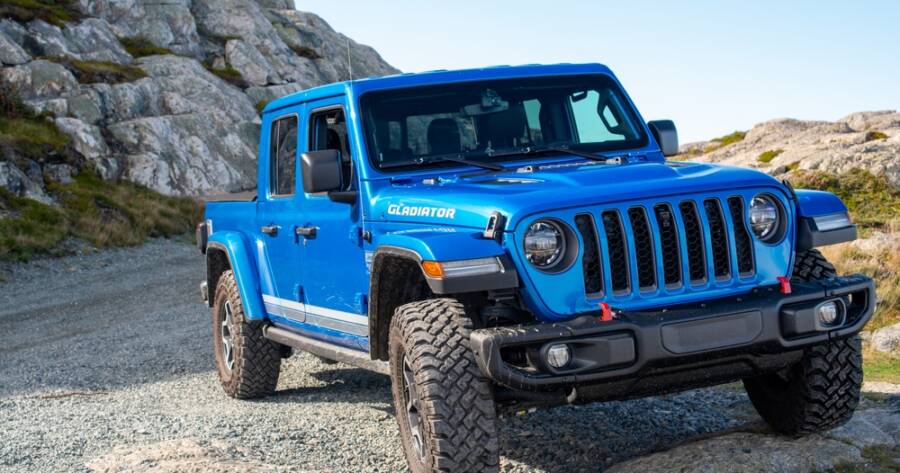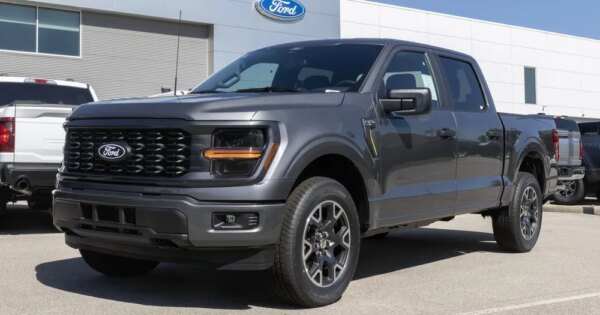The Jeep Gladiator is a rugged and versatile midsize pickup truck that appeals to adventurers, off-road enthusiasts, and practical drivers alike. Combining Jeep’s legendary off-road capabilities with the functionality of a truck, the Gladiator is a unique contender in its class. However, as with any vehicle, fuel efficiency and performance are top considerations for potential buyers. This article delves into what you can realistically expect from the Gladiator’s fuel efficiency and performance, exploring the various factors that may influence your driving experience.
Fuel Efficiency: A Realistic Perspective
Fuel efficiency in the Jeep Gladiator varies depending on the specific configuration, driving habits, and terrain. The Gladiator’s available engine options—a 3.6L Pentastar V6 and a 3.0L EcoDiesel V6—offer distinct fuel economy profiles.
Gasoline Engine Efficiency
The standard 3.6L Pentastar V6, paired with either a six-speed manual or an eight-speed automatic transmission, typically delivers between 16-19 mpg in city driving and 22-24 mpg on the highway, depending on trim level and configuration. Drivers who prioritize smooth daily commutes and moderate off-road adventures may find this engine satisfactory, though it is not the most fuel-efficient option in the midsize truck segment.
Diesel Engine Efficiency
For those seeking improved fuel efficiency, the 3.0L EcoDiesel V6 engine is worth considering. It achieves an EPA-estimated 22-24 mpg in city driving and up to 28-30 mpg on the highway under optimal conditions. This makes the diesel engine an attractive option for drivers frequently covering long distances or towing heavy loads, as diesel engines often excel in torque and efficiency over extended periods.
Factors Impacting Fuel Efficiency
Several variables can influence the Gladiator’s fuel efficiency:
- Driving conditions: Frequent off-road driving, stop-and-go city traffic, and hauling or towing can significantly reduce mpg.
- Payload and towing: Carrying heavy cargo or towing near the Gladiator’s maximum capacity (up to 7,650 pounds with the diesel engine) will likely increase fuel consumption.
- Aerodynamics: The Gladiator’s boxy design, while iconic, may lead to greater wind resistance, especially at higher speeds.
Ultimately, while the Gladiator isn’t the segment leader in fuel efficiency, its ratings are competitive for a vehicle offering both off-road prowess and utility.
Performance: Power Meets Versatility
The Jeep Gladiator’s performance capabilities extend beyond its fuel efficiency figures, focusing instead on its versatility, off-road excellence, and towing capacity.
Engine Power and Acceleration
The Gladiator’s 3.6L Pentastar V6 engine produces 285 horsepower and 260 lb-ft of torque, providing reliable power for a variety of driving scenarios. While acceleration may not be as brisk as some competitors in the midsize truck class, it is adequate for everyday driving and moderate off-road challenges.
The 3.0L EcoDiesel V6, on the other hand, delivers 260 horsepower and a robust 442 lb-ft of torque. This engine is particularly well-suited for towing and hauling, as the high torque output makes climbing inclines and pulling heavy loads more manageable.
Off-Road Capabilities
Off-road performance is where the Gladiator truly shines. Built on Jeep’s iconic 4×4 system, the Gladiator is equipped with features such as:
- Trail rated badges: Models like the Rubicon include additional off-road enhancements, including locking differentials and enhanced suspension systems.
- High ground clearance: A ground clearance of up to 11.1 inches enables the Gladiator to traverse rocky and uneven terrain effortlessly.
- Water fording ability: The Gladiator can handle water crossings up to 31.5 inches deep, depending on trim.
These features make the Gladiator a go-to vehicle for those who frequently venture into rugged terrains, though they may slightly compromise on-road performance compared to more city-focused pickups.
Towing and Payload
The Jeep Gladiator offers impressive towing capabilities for its class. With the 3.6L V6 engine, the towing capacity ranges between 4,000 and 7,000 pounds, depending on configuration. Opting for the diesel engine increases the towing capacity to its maximum of 7,650 pounds. The payload capacity ranges from 1,105 to 1,700 pounds, providing ample utility for work or recreational needs.
Balancing Fuel Efficiency and Performance
Potential Gladiator owners should carefully consider their priorities. If fuel efficiency is paramount, the EcoDiesel engine may be the best choice. However, drivers who value a blend of on-road comfort and off-road performance might find the gasoline-powered models more than sufficient.
Optimizing Your Experience
To maximize your Gladiator’s fuel efficiency and performance, consider these tips:
- Maintain proper tire pressure: Underinflated tires can increase rolling resistance and reduce mpg.
- Lighten the load: Avoid carrying unnecessary weight in the truck bed.
- Drive smoothly: Gradual acceleration and braking can improve efficiency, particularly in city driving.
- Utilize fuel-saving features: Take advantage of features like engine start-stop technology in applicable trims.
Drive One Home Today!
The Jeep Gladiator combines iconic Jeep DNA with the utility of a midsize truck, offering a unique driving experience tailored to adventure seekers and practical users alike. While its fuel efficiency may not top the charts, the Gladiator’s range of engine options ensures a balance between performance and economy. Off-road enthusiasts will appreciate its rugged capabilities, while those with towing or payload needs will find its powertrain options versatile.
In the end, the Jeep Gladiator is best suited for drivers seeking a vehicle that excels in off-road environments and delivers reliable performance across varied terrains. While fuel efficiency may vary, informed driving habits and regular maintenance can help you get the most out of this distinctive truck.





